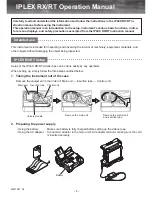
5
SPECIFICATIONS
PRECISION AND ACCURACY
Range
0.00 to 5.00 mg/L
Resolution
0.01 mg/L
Accuracy
±0.04 mg/L ± 2% of reading @ 25°C
Typical EMC Deviation
±0.01 mg/L
Light Source
Tungsten lamp
Light Detector
Silicon Photocell with narrow band interference filter @ 525 nm
Method
Adaptation of the USEPA method 315B and Standard Method 3500-Fe B.
The reaction between iron and the phenantroline reagent causes an
orange tint in the sample.
Environment
0 to 50°C (32 to 122°F); max 95% RH non-condensing
Battery Type
1 x 9 volt
Auto-Shut off
After 10' of non-use in
measurement mode;
after 1 hour of non-use in
calibration mode;
with last reading reminder.
Dimensions
192 x 102 x 67 mm (7.6 x 4 x 2.6")
Weight
290 g (10 oz.).
REQUIRED REAGENTS
Code
Description
Quantity/test
HI 93721-0
Iron High Range Powder Reagent
1 packet
Precision
Precision
Precision
Precision
Precision is how closely repeated measurements
agree with each other. Precision is usually
expressed as standard deviation (SD).
Accuracy
Accuracy
Accuracy
Accuracy
Accuracy is defined as the nearness of a test
result to the true value.
Although good precision suggests good accuracy,
precise results can be inaccurate. The figure
explains these definitions.
In a laboratory using a standard solution of 1.50
mg/L Iron and a representative lot of reagent, an
operator obtained with a single instrument a
standard deviation of 0.010 mg/L.






































